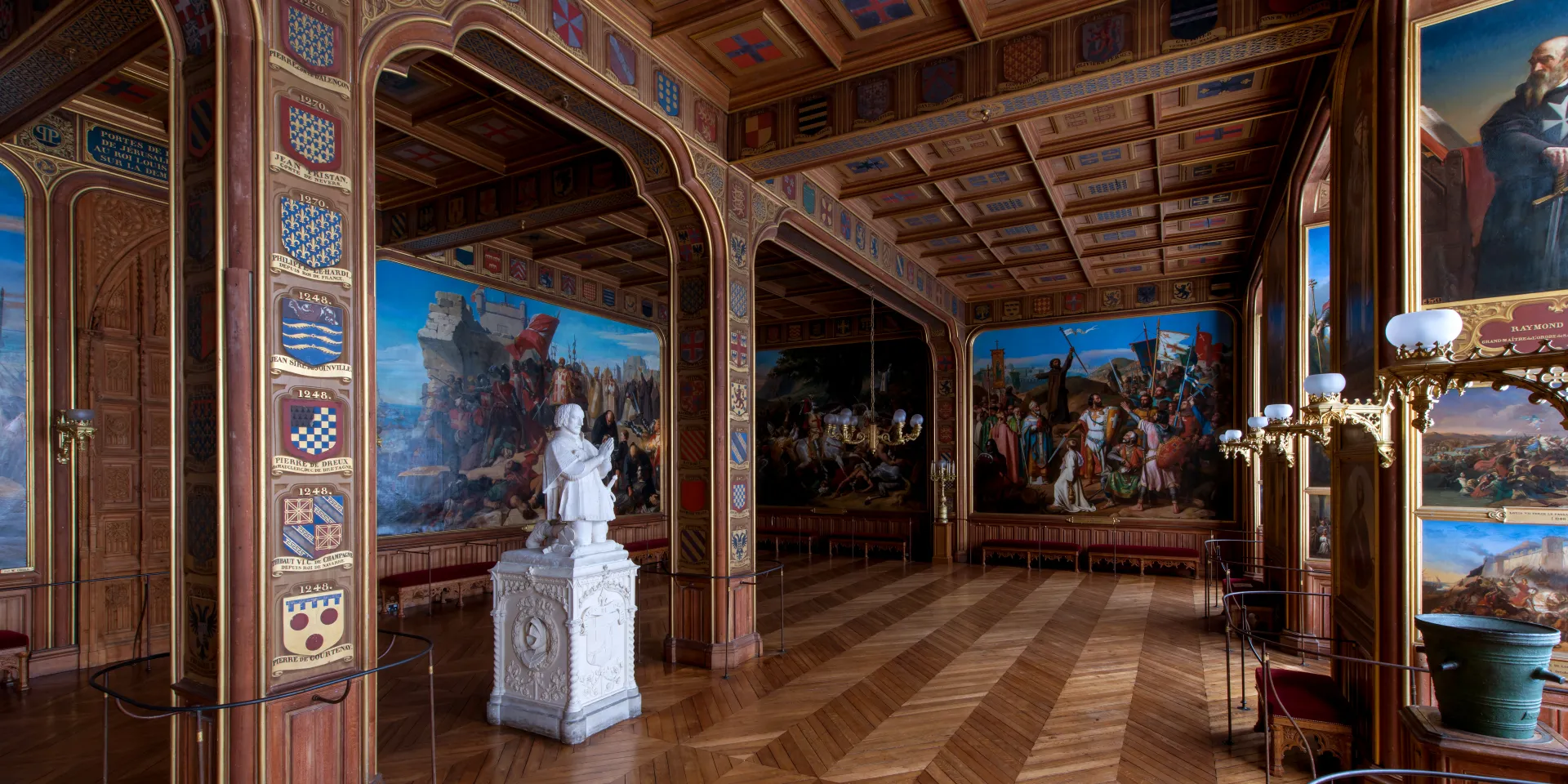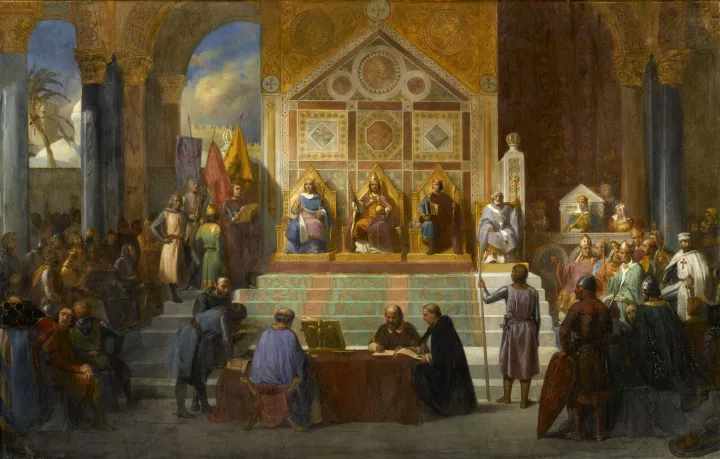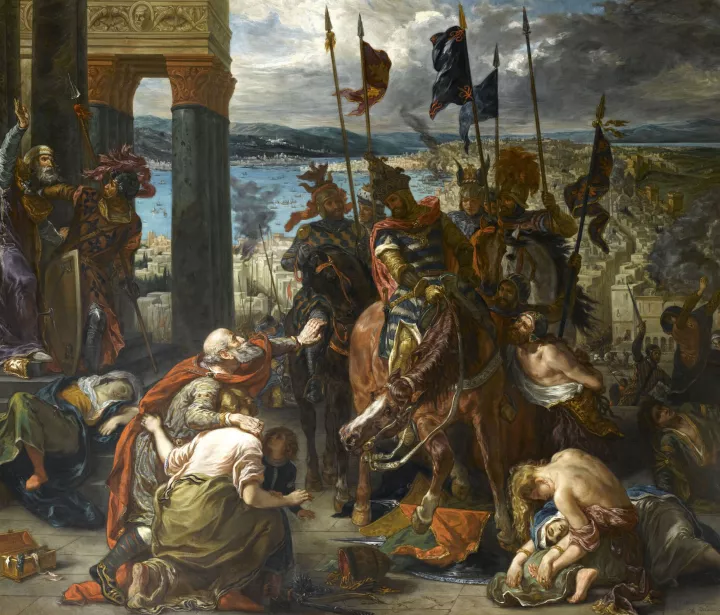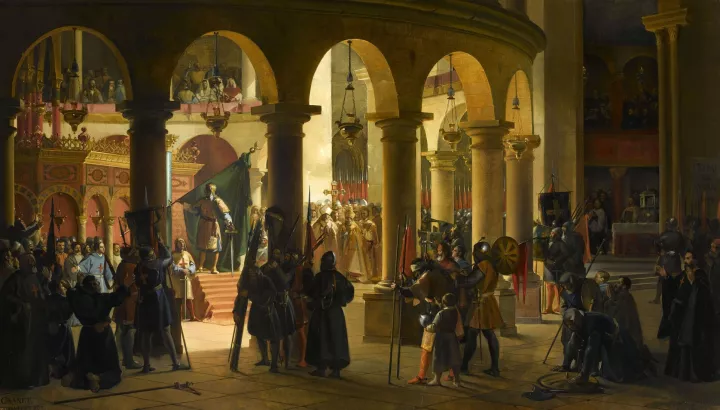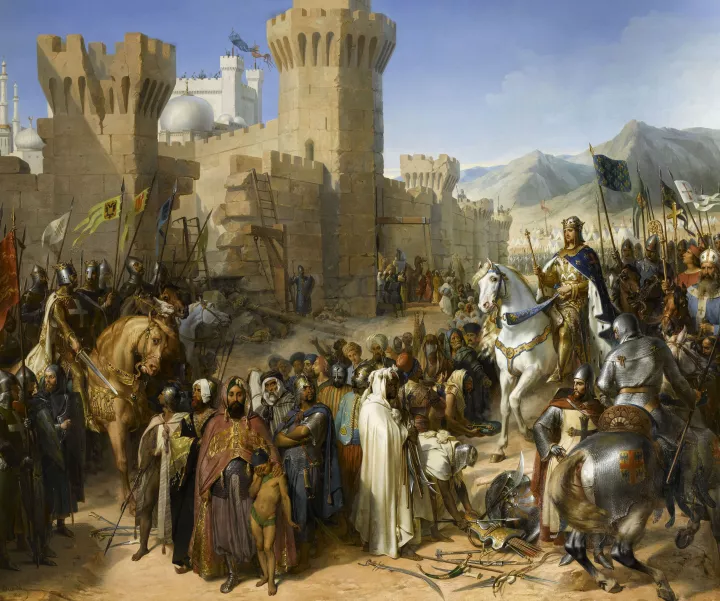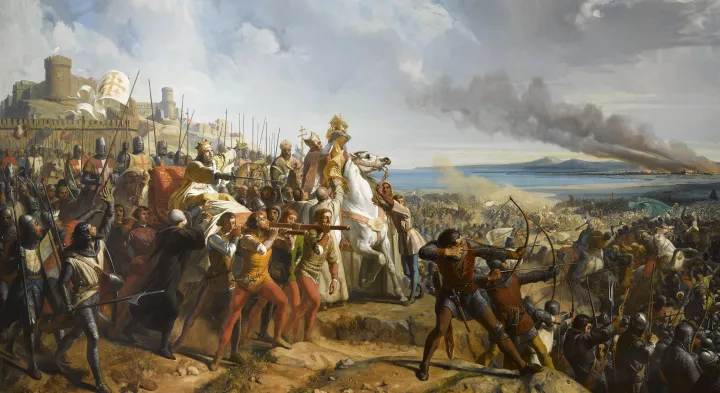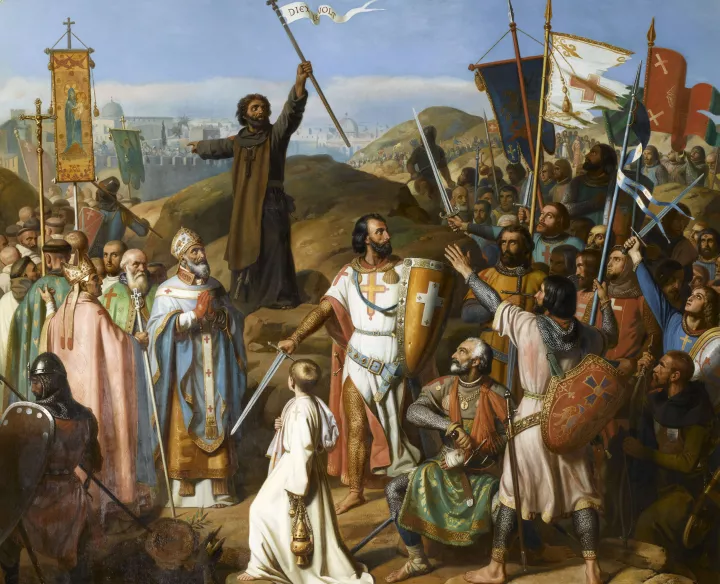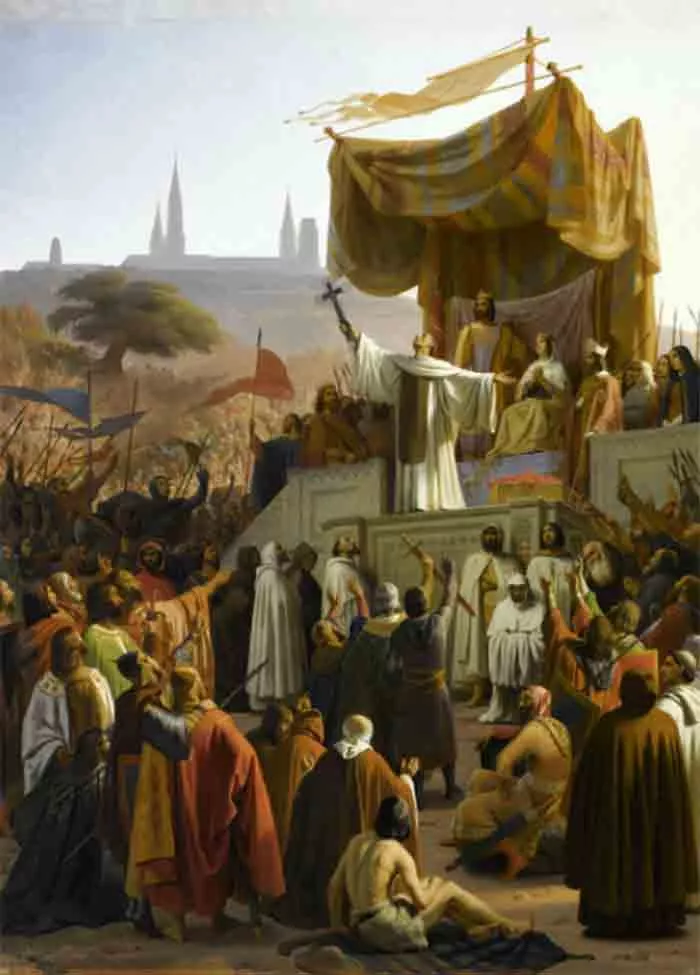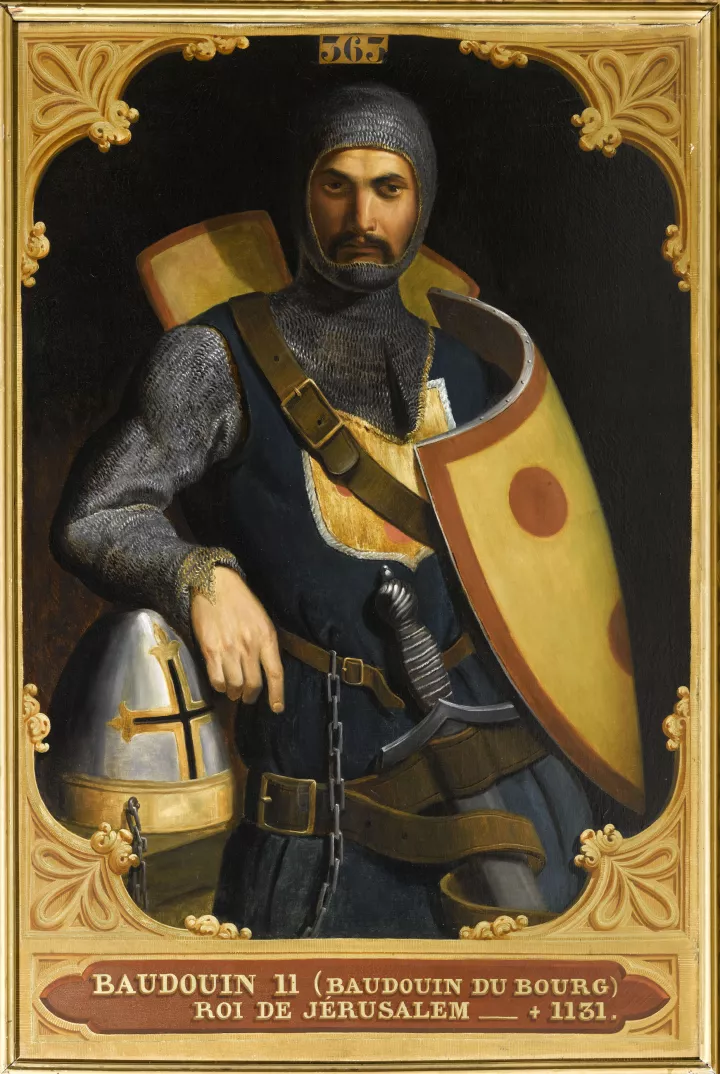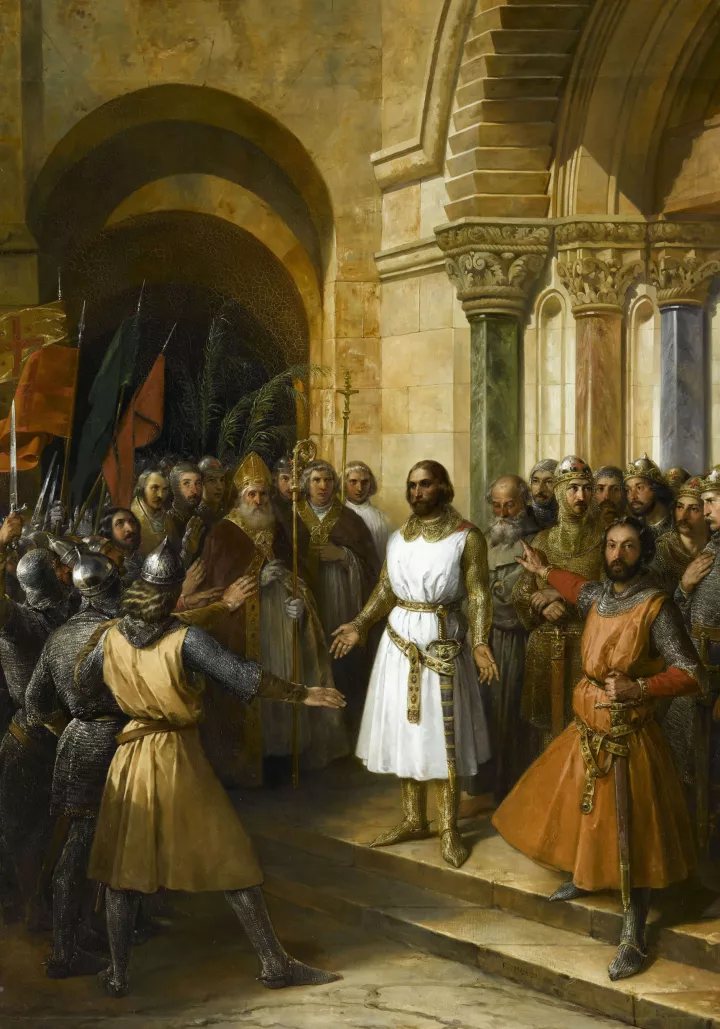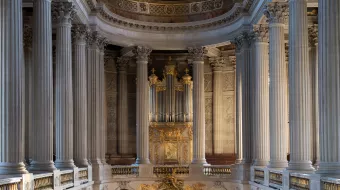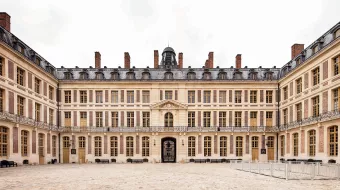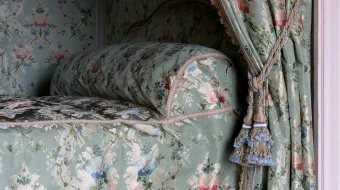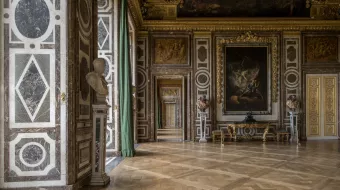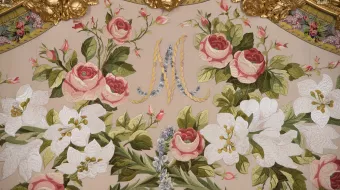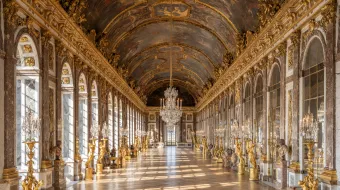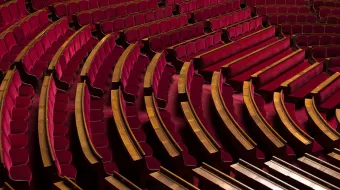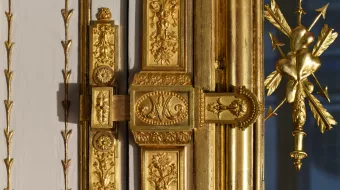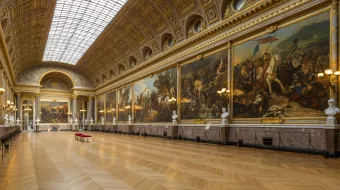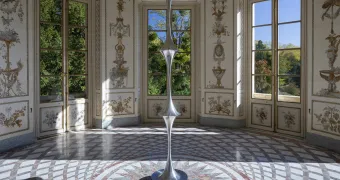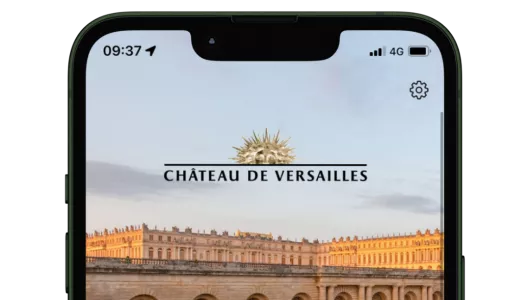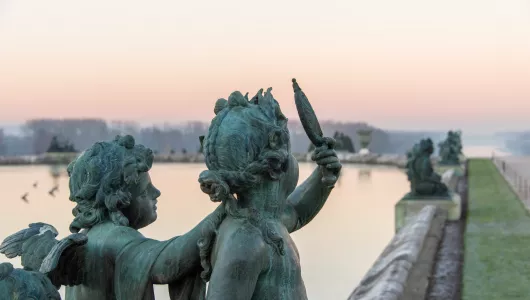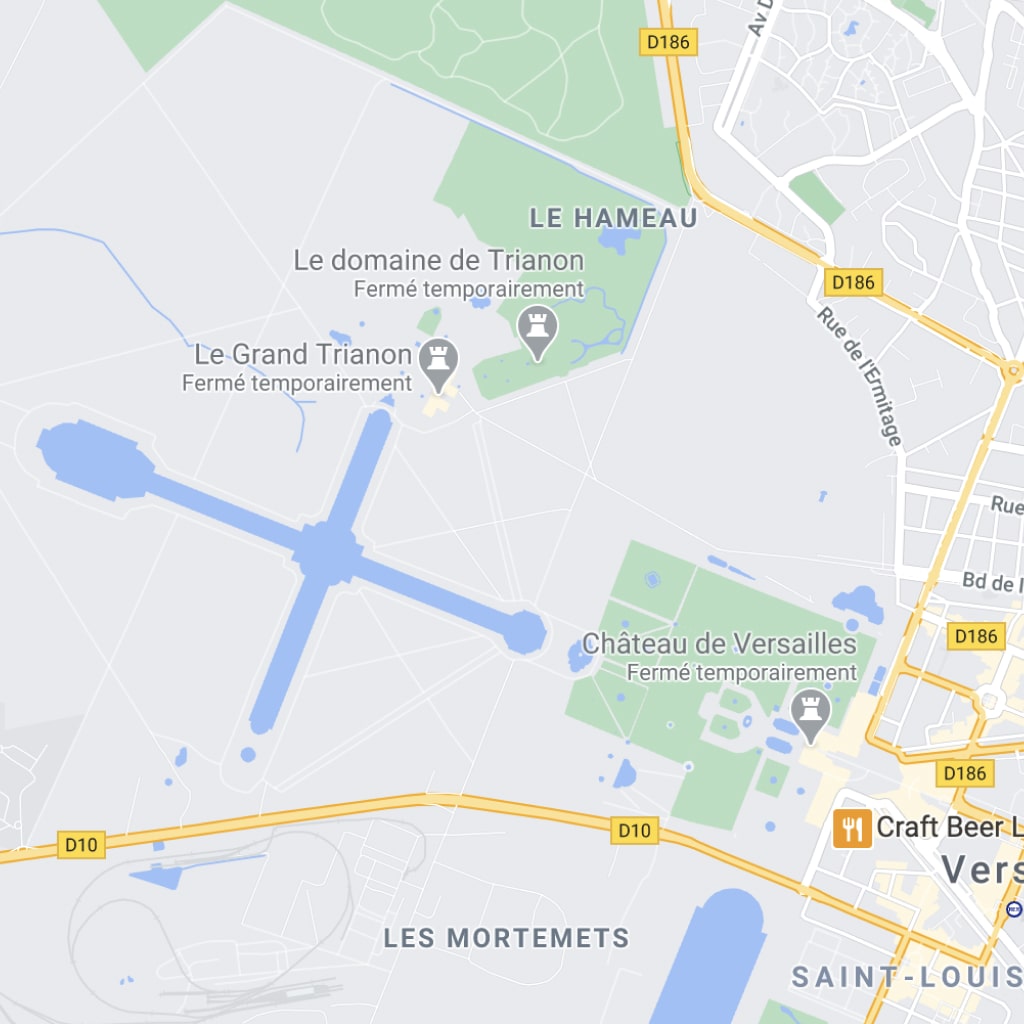A Political intent
This project was above all Louis-Philippe's tribute to the Legitimist, “immemorial” nobility, who shunned his regime and whose support he tirelessly sought. This old Nobility of the Sword was the soul of the Crusades, going to liberate Christ’s tomb in Jerusalem from the end of the 11th century to the end of the 13th century, and thereafter ensuring pilgrim routes were safe. The depiction of the crusades appeared quite early in the king's Versailles project, but the room was only created following Sultan Mahmud II's donation of the Rhodes Door in 1836.
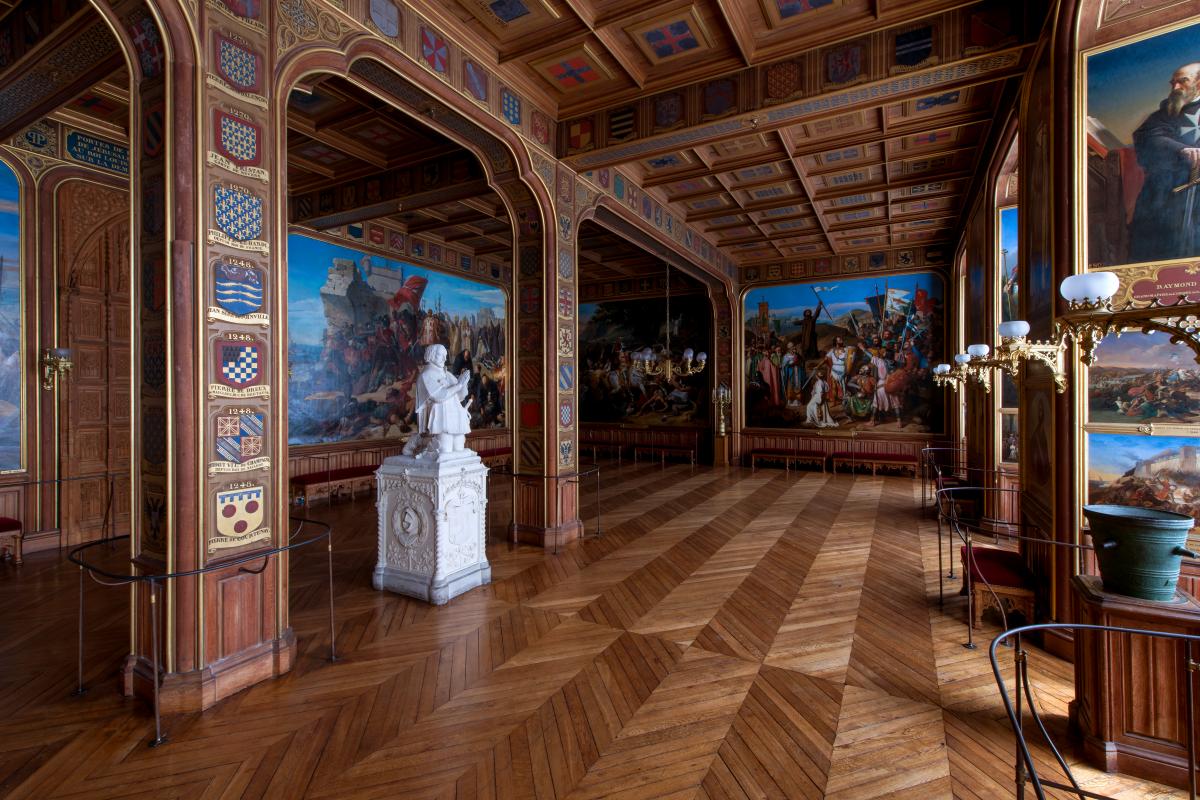
The Great Crusades Room
© EPC/Thomas Garnier
Refurbishment of the North Wing
The works were placed on the garden level in the central pavilion of the North Wing, the Noailles Pavilion, renamed the “King’s Pavilion”. The Palace architect Frédéric Nepveu replaced the Ancien Régime’s five residential stories with three levels: kitchens on the ground floor, for receptions the king held at the palace; the Crusades Rooms at garden level, with first one and then five rooms; and spaces on the history of Louis-Philippe’s reign on the 1st floor, now the Africa Rooms. Work on the Crusades Rooms began in 1837, and was completed in several steps: the great room was finished in 1842; all the rooms opened in May 1843; the decorative painting was completed in 1846. But in February 1848, when the regime collapsed, several paintings were still missing.
The Rhodes Door
The Rhodes Door arrived in France in 1837 and served as the model for all the decor of the Crusades Rooms. The door came from the Order of the Knights of the Hospital of Saint John of Jerusalem, which was based on the Island of Rhodes in the beginning of the 14th century. The Order had been chased out of the Holy Land in 1291, following the fall of Acre, which put an end to the Crusades.
The double-leaf door is richly sculpted in late Gothic style. It dates from 1512 and features a small statue of Saint John the Baptist, the order’s patron. It was rediscovered in 1836 and stored in a Hospital warehouse by one of Louis-Philippe’s sons, the Prince of Joinville, who had the Sultan gift it to his father for his Versailles museum.

The Rhodes Door
© RMN-GP (Château de Versailles) / © Franck Rau
The masters of 19th-century painting
The five Crusades Rooms tell the story of the eight main crusades, between the end of the 11th and the end of the 13th century. They also recount the main events in the history of the Knights Hospitaller, from their departure from the Holy Land at the end of the 13th century, until their arrival on the Island of Malta in the 16th century. The 125 paintings in these rooms, inset into the wood panelling, were produced by many historical and portrait painters living in Paris at the time: Delacroix, Granet, Blondel, Larivière, Schnetz, Signol, Odier etc. There are also works by young artists from other countries who came to France for training: the two main representatives of the first romantic school in Belgium, Louis Gallait and Gustaf Wappers, as well as a promising young Spaniard, Federico de Madrazo y Kunst.
Historic and artistic testimony
Louis-Philippe wanted a fully Gothic-style decor that included old features to lend historic and authentic support to his account. In the Great Room, in addition to the Rhodes Door, is a bronze mortar of the same origin as well as a statue of the praying figure of Villiers de l’Isle-Adam, a Grand Master of the order. Before the French Revolution, the statue was to be found on a monument dedicated to him in the Le Temple church in Paris.
Today, the decor in the Crusades Rooms is one of the oldest and most complete French Neo-Gothic collections still intact.
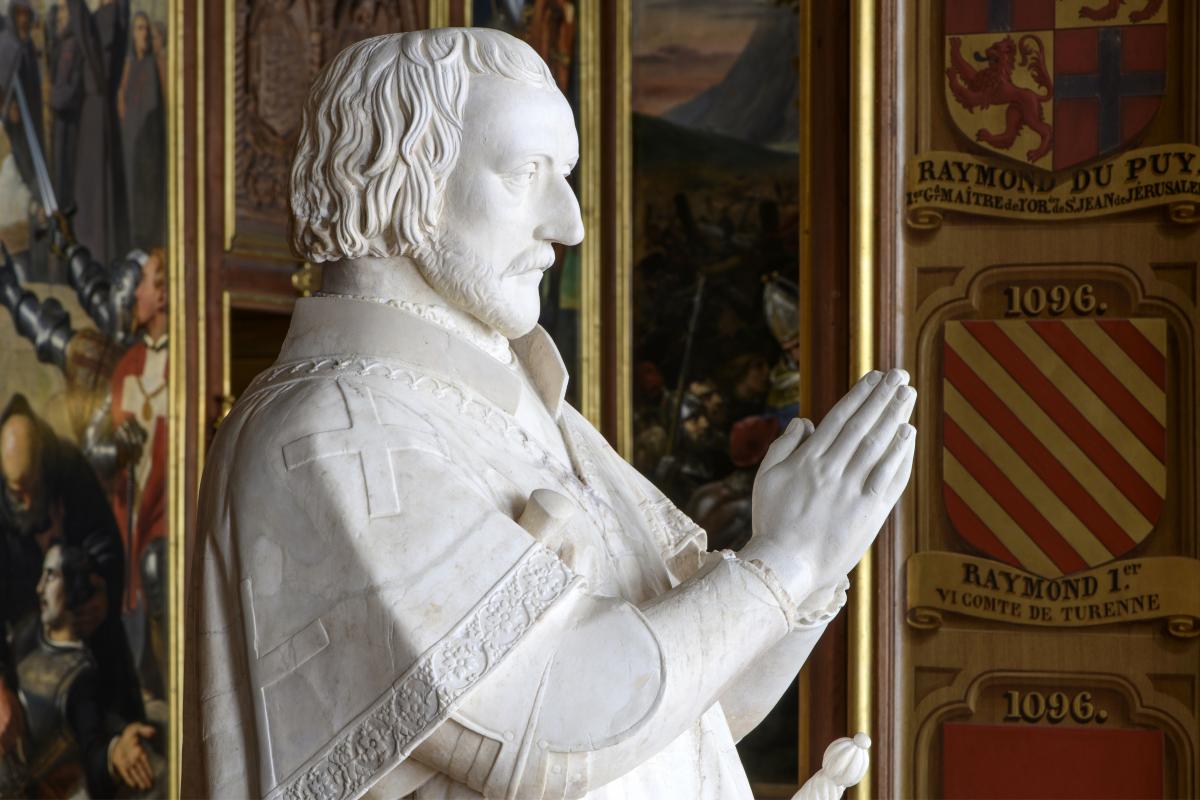
Philippe de Villiers de l'Isle-Adam, Grand Master of the Hospitallers of the order of Saint-John of Jerusalem
© EPV/Thomas Garnier
The Historic galleries also include
- The Gallery of Great Battles
- The 1830 Room
- The Coronation Room
- The Empire Rooms
- The Africa, Crimea and Italy Rooms
- The 1792 Room
- The North and South Attics



